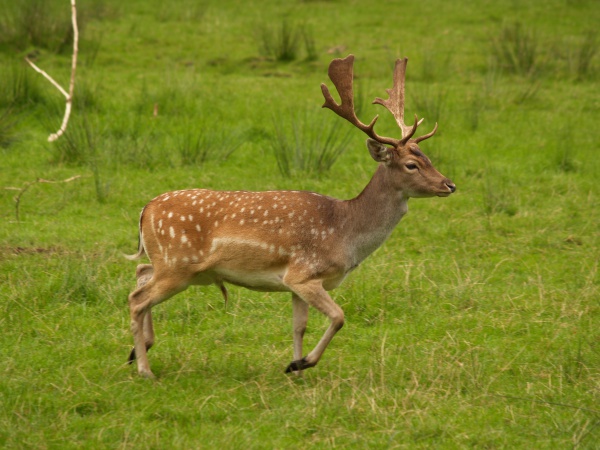Facts About Fallow deer
The fallow deer is a type of ruminant mammal from the Cervidae family, originally native to Europe but now found across many parts of the world. These deer are renowned for their diverse coat colors, which include common, menil, melanistic, and leucistic patterns. They thrive in mixed woodlands and open grasslands, favoring these environments for grazing. A distinctive feature of the species is that only the males, known as bucks, grow antlers that become shovel-shaped once they reach three years of age. These deer are remarkably agile, capable of running at speeds up to 50 km/h and jumping as high as 1.75 meters.
Historically, fallow deer were widespread across Europe during the last interglacial period. They were highly valued for their meat in ancient times, but their numbers declined due to environmental changes. Over time, they were introduced to various countries, including the United States, South Africa, and New Zealand. The Romans played a significant role in spreading them across central Europe.
Fallow deer have a polygynous mating system, whereby one male mates with multiple females. The breeding season lasts about 135 days. During this time, bucks engage in various mating behaviors such as lekking (displaying in communal areas), forming harems (groups of females), and establishing dominance hierarchies. Females, known as does, may go through several estrous cycles, and males exhibit specific rut behaviors to determine when females are fertile. After mating, the does provide all the care for the fawns, weaning them after about seven months.
During the rutting season, male fallow deer compete intensely for access to females. The size of their antlers and their overall physical condition play crucial roles in their mating success. Aggressive behaviors are common as they vie for mates, resources, and territory. Endurance rivalry, where males compete based on stamina and persistence, is also significant during this period.
The term "fallow" refers to the deer's pale brown color. Different cultures have various names for these deer, often based on characteristics such as their antler shape or coat color.

 Belgium
Belgium